Sourav Pan
Transcript
Hey everyone! Today, we’re diving into the fascinating world of algae. Get ready to discover some of the most important and diverse organisms on our planet!
Think of algae as plant-like protists, mostly found chilling in aquatic environments. They’re incredibly diverse organisms that share one amazing ability – they can make their own food!
They’re super important because they’re photosynthetic, meaning they make their own food using sunlight, just like plants! This amazing process also produces oxygen that we breathe.
They come in all shapes and sizes, from tiny single-celled organisms you need a microscope to see, to giant kelp forests that can tower over 60 meters tall – that’s taller than a 20-story building!
We’ll be exploring 11 different types of algae, each with unique characteristics, colors, and amazing adaptations. From the familiar green algae to the microscopic diatoms, each group has its own fascinating story to tell!
So get ready for an incredible journey through the diverse and amazing world of algae. Each type we explore will show you just how remarkable these organisms really are!
What exactly makes algae, algae? The first defining characteristic is that algae are photosynthetic organisms. This means they have the amazing ability to convert sunlight into energy, just like plants do.
But here’s what makes algae different from plants: they lack true roots, stems, and leaves. While plants have these specialized structures, algae have a much simpler body plan.
Scientists classify algae based on several important characteristics. Let’s look at an algae cell to understand these classification criteria better.
Pigmentation is especially important for classification. Different algae contain different colored pigments, which give them their distinctive appearances and help them capture light efficiently.
For our study, we’ll be using Fritsch’s classification system. This system divides algae into eleven distinct classes based on their characteristics. It’s one of the most comprehensive ways to organize these diverse organisms.
So remember: algae are photosynthetic organisms without true roots, stems, or leaves. They’re classified by their pigmentation, cell structure, and reproduction methods using systems like Fritsch’s eleven-class framework.
Welcome to our exploration of Chlorophyceae, commonly known as green algae! These fascinating organisms represent one of the most diverse and important groups in the algae kingdom.
Green algae are incredibly diverse, with approximately seven thousand known species. They thrive in both marine and freshwater environments, from tiny ponds to vast oceans.
What makes green algae special? Let’s look at their cellular structure. Green algae are eukaryotic organisms, meaning they have a well-defined nucleus enclosed in a membrane.
Green algae cells contain several important structures: a well-defined nucleus that controls cell activities, chloroplasts containing chlorophyll for photosynthesis, a protective cell wall, and starch granules for energy storage.
The chloroplasts are particularly important because they contain chlorophyll, the green pigment that captures sunlight for photosynthesis. This is what gives green algae their characteristic vibrant green color.
Green algae have fascinating reproductive strategies. They can reproduce both sexually and asexually, giving them great flexibility in different environmental conditions. Many follow a haplontic life cycle.
A perfect example of green algae is Spirogyra, those stringy green organisms you often see floating in ponds. Spirogyra has distinctive spiral-shaped chloroplasts and reproduces through a process called conjugation, where two filaments connect and exchange genetic material.
To summarize, green algae are the most diverse group of algae with around seven thousand species. They are eukaryotic organisms with chloroplasts that give them their green color. Their flexible reproduction strategies and role as primary producers make them crucial to aquatic ecosystems worldwide.
Now let’s explore Phaeophyceae, the fascinating world of brown algae. These remarkable organisms create some of the most spectacular underwater landscapes on Earth.
Brown algae are primarily marine organisms, meaning they live in ocean environments. With approximately 2000 known species, they represent one of the most diverse groups of algae in our seas.
The distinctive brownish color of these algae comes from a special pigment called fucoxanthin. This pigment not only gives them their characteristic appearance but also helps them capture light efficiently in deeper ocean waters.
Brown algae have complex cell structures and can reproduce both sexually and asexually, giving them great flexibility in their life cycles. They store their food energy as special compounds called laminarin and mannitol.
Brown algae show incredible diversity in size and form. Let’s look at some examples of different brown algae species and see how varied they can be.
The most spectacular examples of brown algae are the giant kelp forests. These underwater forests can grow incredibly tall, sometimes reaching lengths of over 60 meters, creating complex three-dimensional habitats that support countless marine species.
Brown algae like kelp are truly remarkable organisms. From their unique fucoxanthin pigments to their complex life cycles and massive size, they represent some of the most important and impressive algae in our oceans.
Now let’s explore Rhodophyceae, the fascinating world of red algae! These remarkable organisms showcase some of the most beautiful colors in the algae kingdom.
Red algae represent one of the largest groups in Fritsch’s classification system, with approximately six thousand species found around the world. These organisms are predominantly marine and have adapted to thrive in deeper waters where other algae cannot survive.
The distinctive red color of these algae comes from special pigments called phycoerythrin and phycocyanin. Phycoerythrin gives the bright red color, while phycocyanin adds blue tones. Together, these pigments create the characteristic red appearance that gives this group its name.
Red algae have several unique characteristics that set them apart. They possess distinctive cell wall structures and reproduce primarily through sexual methods. Unlike other algae, they store their food as floridean starch, a specialized form of energy storage. These adaptations help them thrive in the deeper, low-light marine environments they call home.
Red algae are incredibly valuable commercially, providing us with two important substances: agar and carrageenan. Agar is extracted from species like Gracilaria and is widely used in laboratory culture media and as a food thickening agent.
Carrageenan, extracted from red algae like Chondrus, is another valuable product. It’s widely used as a food stabilizer and thickener, especially in dairy products. You’ll also find carrageenan in cosmetics and pharmaceutical products, making red algae an essential part of many industries.
Red algae represent a remarkable group of organisms that have adapted to thrive in marine environments while providing humanity with valuable commercial products. From the laboratory to your kitchen, red algae play an important role in our daily lives through agar and carrageenan production.
Now we explore Xanthophyceae, commonly known as yellow-green algae. This diverse group contains approximately 600 species, making them a significant part of freshwater ecosystems worldwide.
The distinctive yellow-green color of Xanthophyceae comes from their unique pigment composition. They contain more carotenoids relative to chlorophyll compared to other green algae, giving them their characteristic yellowish tint.
Xanthophyceae are primarily freshwater specialists, thriving in streams, ponds, and lakes. They have relatively simple cell structures and are known for storing their food reserves as oil droplets rather than starch.
Xanthophyceae display remarkable diversity in their forms. Some like Chlorogloea form colonies, others like Tribonema grow as long filaments, while Botrydium can even survive in terrestrial environments.
Vaucheria is perhaps the most well-known member of Xanthophyceae. It forms distinctive cottony masses in freshwater environments and has a unique coenocytic structure, meaning its cells contain multiple nuclei without dividing walls.
Xanthophyceae primarily reproduce through asexual methods. This includes simple cell division, formation of swimming zoospores, and fragmentation where pieces of the organism break off to form new individuals.
Xanthophyceae represent a fascinating group of algae with their distinctive yellow-green coloration, freshwater lifestyle, and simple yet effective reproductive strategies. From colonial forms to filamentous species like Vaucheria, they play important roles in aquatic ecosystems.
Welcome to Chrysophyceae, the golden algae! These beautiful microorganisms get their name from their distinctive golden shimmer, and they represent one of the most fascinating groups in the algae kingdom.
Golden algae are primarily freshwater organisms with about one thousand known species. They’re called golden algae because of their beautiful golden color, which comes from special pigments called fucoxanthin.
Let’s examine the structure of these remarkable organisms. Golden algae have unique features that set them apart from other algae groups.
One of the most distinctive features of golden algae is their silica scales. These microscopic scales cover their cell walls like tiny pieces of armor, giving them protection and their characteristic appearance.
Here we can see golden algae under the microscope. Notice their characteristic golden-yellow color and the way they often form chains or clusters in freshwater environments.
Golden algae prefer nutrient-poor freshwater environments. They’re often found in lakes, ponds, and streams where other algae might struggle to survive. This makes them important indicators of water quality.
Golden algae reproduce primarily through asexual methods, creating identical copies of themselves. They store their food as a unique substance called chrysolaminarin, which is different from the starch that plants use.
One of the most well-known examples of golden algae is Dinobryon. These organisms often form beautiful branching colonies that look like tiny trees under the microscope. They’re excellent examples of how golden algae can create complex structures.
Like many algae, golden algae can sometimes form blooms when conditions are right. These blooms can be both beneficial and problematic, affecting water quality and aquatic life in their freshwater habitats.
Golden algae represent a unique and important group of freshwater microorganisms. Their distinctive golden color, silica scales, and ability to thrive in nutrient-poor waters make them fascinating subjects for study and important indicators of aquatic ecosystem health.
Now we explore Bacillariophyceae, commonly known as diatoms. These remarkable organisms are like tiny glass houses floating in our waters, with over one hundred thousand different species discovered so far.
Diatoms display incredible diversity in their shapes and patterns. They inhabit both marine and freshwater environments worldwide, from tropical oceans to arctic lakes. Each species creates its own unique geometric pattern, like nature’s own microscopic art gallery.
What makes diatoms truly special is their cell walls made of silica, the same material as glass. These walls are called frustules and consist of two halves that fit together like the top and bottom of a petri dish. The intricate patterns etched into these glass walls are so precise they were once used to test the quality of microscope lenses.
Diatoms have a unique reproduction challenge. When they divide asexually, one daughter cell inherits the larger top half while the other gets the smaller bottom half. This means one cell becomes progressively smaller with each generation, eventually becoming too small to survive and triggering sexual reproduction to restore full size.
Diatoms are ecological powerhouses. As primary producers, they form the foundation of aquatic food webs and are responsible for producing about twenty percent of all oxygen on Earth. Unlike other algae that store starch, diatoms store their energy as oil droplets, making them valuable for both ecosystems and potential biofuel production.
Diatoms represent one of nature’s most beautiful and important groups of organisms. Their glass-like frustules showcase incredible geometric artistry while serving as the foundation for aquatic ecosystems worldwide. These microscopic marvels continue to surprise scientists with their diversity and ecological significance.
Welcome to our exploration of Cryptophyceae, commonly known as cryptomonads. These fascinating algae have some truly unique features that set them apart from other algae groups.
Cryptomonads are found in both freshwater and marine environments around the world. They thrive in lakes, rivers, and oceans, making them quite adaptable organisms.
Here we can see the detailed structure of a cryptomonad cell. Notice the two flagella that help them swim, and the various internal organelles that keep the cell functioning.
One of the most fascinating features of cryptomonads is their ejectosomes. These are special organelles that can be rapidly shot out of the cell, possibly for defense or movement.
Cryptomonads reproduce asexually, creating identical copies of themselves. They play a crucial role as primary producers in aquatic ecosystems, converting sunlight into energy that supports entire food webs.
Cryptomonads contain both chlorophylls and phycobiliproteins as their main pigments. These work together to capture light energy efficiently and enable photosynthesis, while also giving these algae their distinctive colors.
Cryptomonads are truly remarkable algae with their unique ejectosomes, diverse habitats, and important ecological roles. They demonstrate the incredible diversity and adaptability found in the algae kingdom.
Now we explore Dinophyceae, commonly known as dinoflagellates. These fascinating algae are among the most dynamic and diverse members of the algal world.
Let’s examine the intricate structure of a dinoflagellate cell. These organisms have a complex internal organization that makes them unique among algae.
Dinoflagellates are incredibly diverse, with approximately 2000 known species. Most of these species live in marine environments, though some can be found in freshwater.
The defining feature of dinoflagellates is their two flagella. These whip-like structures allow them to swim actively through the water, unlike many other algae that simply drift.
Dinoflagellates have two main feeding strategies. Many are photosynthetic, using sunlight to make their own food like plants. Others are heterotrophic, meaning they consume other organisms for nutrition.
Some dinoflagellates are responsible for harmful algal blooms, also known as red tides. These events can discolor the water and produce toxins that are dangerous to marine life and humans.
Dinoflagellates store their food as starch and oil, which provides them with energy reserves for times when food is scarce or environmental conditions are challenging.
Two well-known examples of dinoflagellates are Ceratium and Gonyaulax. Ceratium has distinctive horn-like projections, while Gonyaulax is one of the species responsible for toxic red tides.
To summarize, dinoflagellates are remarkable algae with two flagella for swimming, diverse feeding strategies, and significant ecological impact. While many are beneficial photosynthetic organisms, some can create harmful blooms that affect marine ecosystems.
Meet Chloromonadineae, one of the smaller and more mysterious groups in the algae family. While they may not be as famous as green or brown algae, these fascinating organisms have their own unique story to tell.
Chloromonadineae are primarily freshwater specialists. You’ll find them swimming around in lakes, ponds, streams, and other freshwater environments. Unlike some algae that can tolerate saltwater, these organisms have adapted specifically to life in fresh water.
What makes Chloromonadineae special? First, they have a unique flagellar structure that helps them move through water. Unlike many other algae, they lack a rigid cell wall, making them more flexible. They’re photosynthetic, meaning they can make their own food using sunlight, and they’re typically single-celled organisms.
Here we can see what these microscopic organisms actually look like under magnification. Each of these small, often teardrop-shaped cells represents an individual Chloromonadineae organism, complete with their characteristic features.
Despite being lesser known, Chloromonadineae play an important role in aquatic ecosystems. As photosynthetic organisms, they serve as primary producers, converting sunlight into energy and forming the base of aquatic food webs. They provide food for zooplankton, which in turn feed larger organisms.
You might wonder why Chloromonadineae aren’t as well-known as green or brown algae. There are several reasons: they’re a smaller group overall, their microscopic size makes them harder to observe and study, they have less direct economic importance to humans, and they’re found in specialized freshwater habitats rather than the more visible marine environments.
Let’s recap what we’ve learned about Chloromonadineae. They’re freshwater specialists with unique flagellar structures, they lack rigid cell walls which gives them flexibility, they serve as important primary producers in aquatic ecosystems, and while they may be lesser known, they’re ecologically significant members of the algae family.
Welcome to Euglenineae, one of the most fascinating groups of algae! These organisms are truly unique because they blur the line between plants and animals.
Euglenineae is a diverse class containing about one thousand species. These organisms are primarily found in freshwater environments like ponds, lakes, and streams.
What makes euglenoids truly special is their dual nature. They possess both plant-like characteristics, such as photosynthesis, and animal-like features, including the ability to move actively.
Let’s examine the structure of a typical euglena. This diagram shows the key components that make euglenoids so unique.
The flagellum is a whip-like structure that allows the euglena to swim through water. The eye spot helps it detect light for photosynthesis.
Chloroplasts enable photosynthesis, making them plant-like. The pellicle is a flexible protein layer that allows shape changes during movement.
Euglenoids have two fascinating methods of movement. They can swim using their flagellum, or crawl by changing their body shape through euglenoid movement.
Euglenoids reproduce asexually through binary fission. The process begins with nuclear division, followed by the splitting of the entire cell into two identical daughter cells.
Euglenoids have a flexible approach to nutrition. They can photosynthesize like plants when light is available, but can also absorb nutrients directly from their environment.
They store their food as paramylon, a unique carbohydrate found only in euglenoids. These paramylon granules serve as energy reserves.
Euglena serves as the classic example of euglenoids and is the most studied member of this group. It perfectly demonstrates the unique dual nature that makes this class so fascinating.
Euglenoids like Euglena represent an important evolutionary bridge, showing us how organisms can combine plant-like and animal-like characteristics in remarkable ways.
Now we come to a fascinating group called blue-green algae, also known as cyanobacteria. These organisms present an interesting classification puzzle that has intrigued scientists for decades.
Here’s the surprising truth: blue-green algae are not actually algae at all! They are bacteria, specifically cyanobacteria. However, they are often grouped with algae because they perform photosynthesis, just like true algae do.
Cyanobacteria have much simpler cell structures compared to true algae. As prokaryotes, they lack a membrane-bound nucleus. Their DNA floats freely in the cell, and they have specialized structures called thylakoids where photosynthesis occurs.
Cyanobacteria are incredibly versatile and can be found in almost every environment on Earth. They thrive in freshwater lakes and rivers, where they sometimes form massive blooms like the one shown here. They also live in marine environments and even on land in moist soils and extreme environments like hot springs.
Cyanobacteria have two remarkable abilities that make them ecologically important. First, they perform photosynthesis, converting sunlight into energy and producing oxygen. Second, many species can fix nitrogen from the atmosphere, converting it into compounds that other organisms can use.
Two well-known examples of cyanobacteria are Anabaena and Nostoc. Anabaena forms long chains of cells and has specialized cells for nitrogen fixation. Nostoc forms distinctive jelly-like colonies and can survive extreme drying. Both reproduce asexually through simple cell division.
The key takeaway is that blue-green algae are actually bacteria that happen to photosynthesize like true algae. Despite their simple structure, these ancient organisms play crucial roles in ecosystems worldwide, producing oxygen and fixing nitrogen that supports all life on Earth.
One of the most fascinating ways scientists classify algae is by their pigmentation. These colorful compounds not only give algae their distinctive appearance, but also play a crucial role in how they capture light for photosynthesis.
Different algae have evolved to capture different wavelengths of light from the electromagnetic spectrum. Each color represents a different wavelength that algae can use for photosynthesis.
Let’s start with green algae. These algae are rich in chlorophyll, the same pigment that makes plants green. Chlorophyll is excellent at capturing red and blue light wavelengths.
Brown algae get their distinctive color from fucoxanthin, a golden-brown pigment. This pigment helps them absorb blue and green light wavelengths, which penetrate deeper into ocean water.
Red algae contain phycoerythrin and phycocyanin pigments, which give them their red coloration. These pigments are particularly good at absorbing blue and green light, allowing red algae to thrive in deep ocean environments.
Golden algae, like brown algae, also contain fucoxanthin, but in different proportions with other pigments. This gives them their characteristic golden appearance and helps them efficiently capture light in aquatic environments.
These diverse pigments represent millions of years of evolution, allowing different algae species to specialize in capturing specific wavelengths of light. This pigmentation strategy enables algae to colonize different depths and environments in aquatic ecosystems.
Now that we’ve explored the colorful world of algal pigments, it’s time to peek inside algal cells and discover what makes them tick. Algal cells are fascinating structures packed with specialized components.
First, let’s establish a fundamental fact: algal cells are eukaryotic. This means they have a true nucleus enclosed by a membrane, along with other specialized organelles.
Here’s a detailed view of an algal cell. Notice the various organelles packed inside. Each has a specific function that keeps the cell alive and functioning.
The most important organelles for algae are the chloroplasts. These green structures contain chlorophyll and other pigments that capture sunlight for photosynthesis.
Many algae have flagella – these are like tiny motors that help them move through water. The flagella beat in coordinated patterns, allowing algae to swim toward light sources for better photosynthesis.
Algal cell walls provide protection and structure, but their composition varies dramatically between different types of algae. Green algae have cellulose walls like plants, while diatoms create intricate glass-like walls from silica.
These different wall materials give algae unique properties. Cellulose walls are flexible, while silica walls create beautiful, intricate patterns that are both strong and lightweight.
Understanding algal cell structure helps us appreciate how these remarkable organisms have adapted to thrive in diverse environments. From their specialized organelles to their varied cell walls, every component serves a purpose in the algal way of life.
Algae are masters of reproduction, having evolved three distinct strategies to multiply and thrive in their environments. Each method serves different purposes and occurs under different conditions.
The simplest form of algae reproduction is vegetative reproduction. In this process, a single algae cell simply divides into two identical daughter cells through mitosis.
Watch as the cell elongates and then splits, creating two genetically identical cells. This is the most common and efficient way for algae to multiply rapidly.
Here we can see various examples of vegetative reproduction in blue-green algae, including cell division, fragmentation of filaments, and formation of specialized cells.
The second method is asexual reproduction through spore formation. This involves creating specialized reproductive cells called spores that can develop into new organisms.
Spores are formed in special structures called sporangia. These spores can be released into the environment and germinate when conditions are favorable.
The third and most complex method is sexual reproduction, where two gametes fuse together to form a zygote. This creates genetic diversity in algae populations.
Two gametes, often called male and female, move toward each other and fuse to create a zygote. This zygote then develops into a new algae organism.
Many algae also exhibit alternation of generations, where they alternate between a diploid sporophyte stage and a haploid gametophyte stage in their life cycle.
The method of reproduction varies significantly depending on the type of algae. Green algae use all three methods, brown algae have complex sexual cycles, blue-green algae rely mainly on vegetative reproduction, and diatoms have their own unique reproductive patterns.
Understanding these reproductive strategies helps us appreciate how algae have successfully colonized virtually every aquatic environment on Earth, from tiny freshwater ponds to vast ocean ecosystems.
Algae might seem small and simple, but they play absolutely crucial roles in keeping our planet’s ecosystems healthy and functioning. Think of them as the unsung heroes of the natural world.
Algae are primary producers, which means they form the very foundation of most aquatic food chains. Without algae, entire ecosystems would collapse because they provide the energy that flows up through all other levels of life.
Here’s an amazing fact: algae produce approximately seventy percent of all the oxygen in Earth’s atmosphere. That’s more oxygen than all the forests and land plants combined! Every other breath you take comes from algae.
Algae are also crucial for carbon cycling. They absorb about fifty percent of all carbon dioxide from the atmosphere, helping to regulate Earth’s climate and reduce greenhouse gas levels. This makes them natural climate change fighters.
In aquatic ecosystems, algae serve multiple vital roles. They provide habitat and shelter for countless marine organisms, help cycle nutrients through the water, maintain water quality, and even protect coastlines from erosion.
To summarize, algae are absolutely essential for life on Earth. They’re the foundation of aquatic food webs, our primary source of oxygen, major carbon dioxide absorbers, and ecosystem supporters. Without algae, our planet would be a very different and much less hospitable place.
Algae aren’t just fascinating organisms – they’re incredibly useful to humans in many different ways. From the food we eat to the fuel that might power our future, algae play important roles in our daily lives.
One of the most familiar uses of algae is as food, especially in Asian cuisine. Seaweed like nori, used to wrap sushi, is actually a type of red algae that’s been harvested and consumed for thousands of years.
Algae are nutritional powerhouses, packed with proteins, vitamins, minerals, and healthy omega-3 fatty acids. Spirulina and chlorella are popular as dietary supplements because of their exceptional nutritional content.
Beyond food, algae have found their way into cosmetics and pharmaceuticals. Many skincare products contain algae extracts because they’re rich in antioxidants and have moisturizing properties.
Perhaps most exciting is algae’s potential as a renewable biofuel. Certain algae species can produce oils that can be converted into biodiesel, offering a sustainable alternative to fossil fuels.
Finally, algae are excellent natural water purifiers. They’re used in wastewater treatment plants to remove pollutants, excess nutrients, and even heavy metals from contaminated water, helping to clean our environment.
From the sushi on our plates to the potential fuel in our tanks, algae demonstrate incredible versatility. As we face challenges like climate change and resource scarcity, these remarkable organisms offer sustainable solutions across multiple industries.
While algae are generally beneficial to our planet, they have a darker side. Some algae can form what we call harmful algal blooms, or HABs for short.
Let’s compare normal algae with harmful algal blooms. Normal algae are beneficial – they produce oxygen and support marine life. But harmful algal blooms are different – they produce dangerous toxins and can actually harm the environment.
Harmful algal blooms are caused by a combination of factors. The main culprit is nutrient pollution, especially nitrogen and phosphorus from fertilizers and sewage. When combined with warm water temperatures and bright sunlight, these nutrients create perfect conditions for harmful algae to multiply rapidly.
Here’s a real example of a harmful algal bloom called red tide. This reddish water you see is caused by dinoflagellates that produce powerful neurotoxins. These toxins can kill fish, marine mammals, and even make humans sick if they eat contaminated seafood.
Another common type is blue-green algae blooms, which are actually cyanobacteria. These form thick green mats on the water surface and produce liver toxins that are extremely dangerous for pets and humans. Dogs have died from drinking water contaminated with these toxins.
When harmful algal blooms die, they create what we call dead zones. Here’s how it happens: First, algae bloom and multiply rapidly. Then they die and decompose. This decomposition process uses up all the oxygen in the water. Finally, fish and other marine life suffocate because there’s no oxygen left.
Harmful algal blooms are becoming a growing global concern. Climate change is creating warmer water temperatures, while increased agricultural runoff and urban development are adding more nutrients to our waterways. These blooms cause billions of dollars in economic losses each year and pose serious health risks to coastal communities worldwide.
The key takeaway is that while most algae are beneficial to our planet, harmful algal blooms represent a serious environmental and health threat that requires our immediate attention and action to address the underlying causes.
Algae might hold the key to addressing one of our planet’s biggest challenges: climate change. These tiny organisms offer promising solutions through their natural abilities.
Algae are incredibly efficient at absorbing carbon dioxide from the atmosphere. Through photosynthesis, they convert CO2 into oxygen and biomass, acting as natural carbon capture systems.
The numbers are impressive. Algae produce seventy percent of Earth’s oxygen and can absorb up to fifty percent of atmospheric carbon dioxide. They’re ten to fifty times more efficient at carbon capture than trees.
Beyond carbon capture, algae can be converted into renewable biofuel. This process transforms algae biomass into jet fuel, gasoline, and diesel, offering a sustainable alternative to fossil fuels.
Algae biofuel offers multiple benefits. It’s renewable, reduces greenhouse gas emissions, can be grown using wastewater, and doesn’t compete with food crops for land.
Scientists worldwide are conducting research to optimize algae for climate solutions. They’re developing better strains, improving cultivation methods, scaling up production, and working to reduce costs.
Investment in algae research is substantial. The European Union has invested over five hundred million euros, while the US Department of Energy provides ten million in funding. The global algae market is projected to grow from forty-two billion to over seventy billion dollars by twenty thirty-two.
Modern algae systems integrate multiple climate solutions. They capture carbon dioxide from industrial emissions, use solar energy for cultivation, and produce valuable products like nutrients and cosmetic ingredients in a closed-loop system.
This represents a circular economy approach where waste carbon dioxide becomes valuable biomass, creating multiple product streams through sustainable manufacturing processes.
While challenges remain in production costs and scalability, the opportunities are enormous. Algae have massive potential for climate impact, growing market demand, and continued technological breakthroughs.
Algae represent one of nature’s most promising climate solutions, offering both immediate carbon capture benefits and long-term sustainable energy alternatives. As research continues, these microscopic organisms may play a crucial role in our fight against climate change.
The future of algae is incredibly bright! These remarkable organisms are poised to revolutionize multiple industries and help solve some of our biggest global challenges.
Scientists around the world are making exciting breakthroughs in algae research. They’re discovering new algae strains with enhanced nutritional profiles, developing improved cultivation methods for higher yields, and using advanced biotechnology to optimize production processes.
One of the most exciting developments is the integration of algae into circular economy initiatives. Instead of treating waste and emissions as problems, we can use them as inputs for algae cultivation, transforming them into valuable products like biofuels, food ingredients, and pharmaceuticals.
The algae industry is expected to experience tremendous growth in the coming years. The global algae products market is projected to grow from 41.88 billion dollars in 2024 to over 70 billion dollars by 2032, representing a 68 percent increase.
This growth will be driven by expansion in key sectors including food and nutraceuticals, biofuels and energy, cosmetics and pharmaceuticals, and emerging carbon capture technologies.
As we look to the future, three key takeaways emerge. First, continuous research is unlocking algae’s full potential with new discoveries happening regularly. Second, circular economy integration is creating truly sustainable solutions that benefit both the environment and the economy. Finally, the projected industry growth promises exciting opportunities for innovation and development in the years ahead.
Now that we’ve explored the fascinating world of algae, let’s summarize the key takeaways that make these organisms so remarkable and important to our planet.
First, algae are photosynthetic organisms that harness sunlight to convert carbon dioxide and water into oxygen and energy. They’re found everywhere from oceans to freshwater lakes, and range from microscopic single cells to massive seaweeds.
Algae are classified based on three main criteria: their pigmentation or colors, their cell structure and organization, and their methods of reproduction. Scientists use systems like Fritsch’s classification to organize algae into eleven major classes.
Ecologically, algae are absolute superstars. They serve as primary producers at the base of food chains, produce approximately seventy percent of Earth’s oxygen, and fix about fifty percent of global carbon dioxide. They’re the foundation of marine and freshwater ecosystems.
Humans use algae in countless ways. They’re increasingly popular as superfoods rich in nutrients, they’re being developed as sustainable biofuels, and they’re used in pharmaceuticals and cosmetics. The algae industry is growing rapidly with new applications discovered regularly.
Perhaps most importantly, algae offer promising solutions to climate change. They excel at carbon capture and sequestration, provide sustainable alternatives to fossil fuels, and can be cultivated at large scales. They’re becoming key players in circular economy solutions for a sustainable future.
In summary, algae are remarkable organisms that power our planet’s ecosystems, provide the oxygen we breathe, offer solutions for countless human needs, and hold tremendous promise for addressing our planet’s environmental challenges. They truly are nature’s unsung heroes.
What an incredible journey we’ve taken together through the fascinating world of algae! From the microscopic to the massive, we’ve explored an amazing diversity of life.
We’ve seen the majestic giant kelp forests, towering underwater cathedrals that create entire ecosystems beneath the waves.
And we’ve marveled at the intricate beauty of microscopic diatoms, tiny glass houses that showcase nature’s incredible artistry at the smallest scales.
This incredible diversity, from massive to microscopic, shows us just how adaptable and successful algae have been throughout Earth’s history.
But beyond their beauty and diversity, we’ve learned that algae are the unsung heroes of our planet’s health.
They quietly work every day, producing seventy percent of the oxygen we breathe and forming the foundation of aquatic food webs that support countless species.
So the next time you find yourself near a lake, river, ocean, or even a small pond, take a moment to pause and appreciate what you’re seeing.
Those green films on rocks, the seaweed swaying in the current, even the tiny organisms you can’t see – they’re all working tirelessly to keep our planet healthy and vibrant.
These small organisms truly have a big impact on our world. Thank you for joining me on this amazing journey through the wonderful world of algae. Keep exploring, keep learning, and keep appreciating the incredible life all around us!
Study Materials
11 Types of Algae With their example.
Helpful: 0%
Related Videos
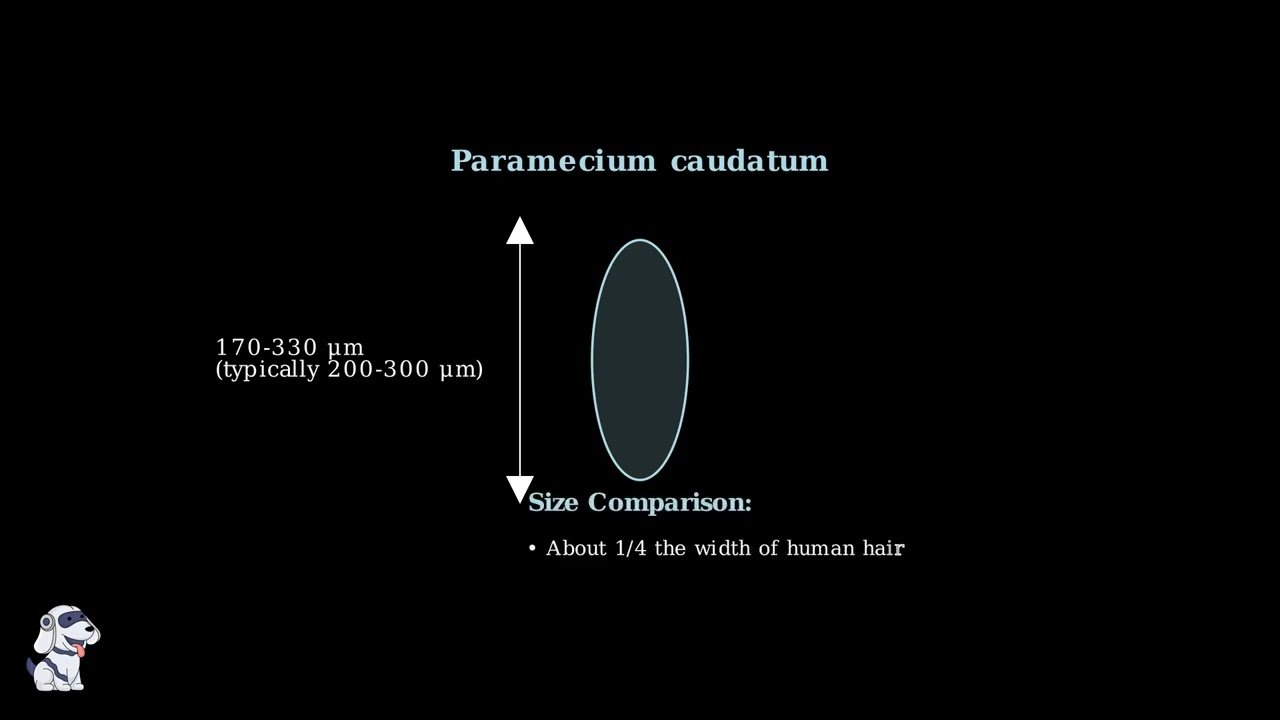
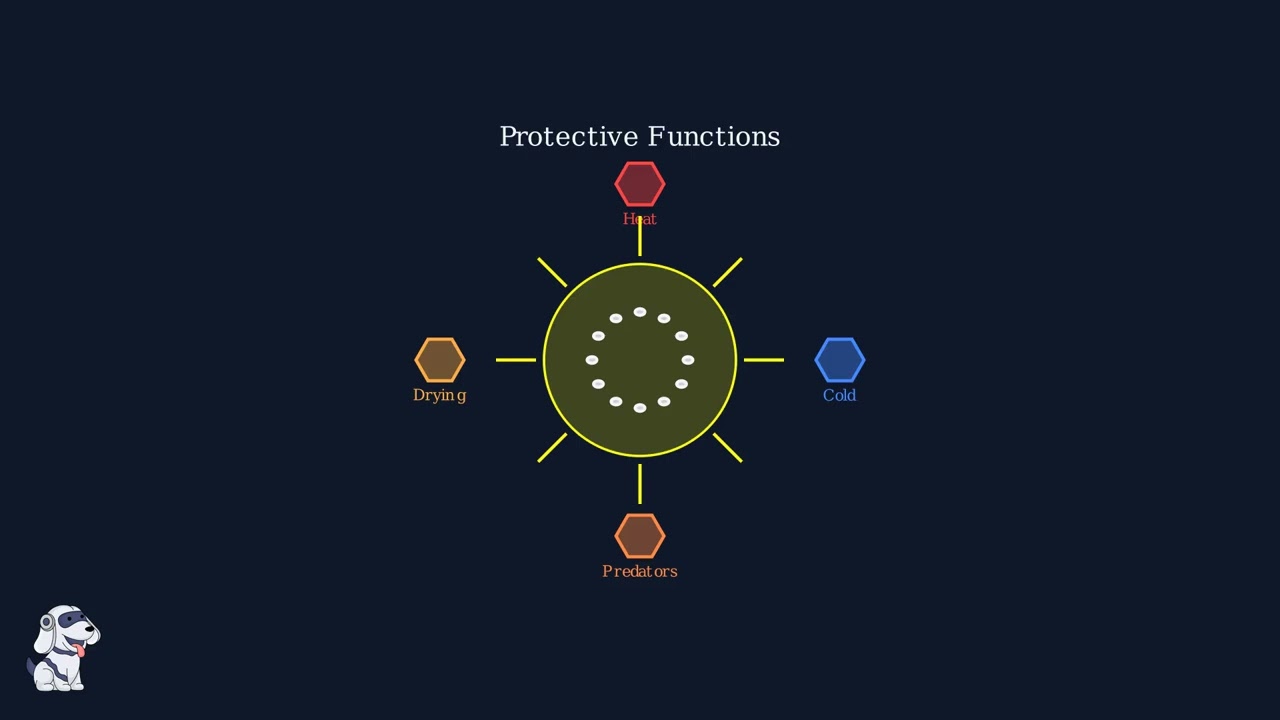
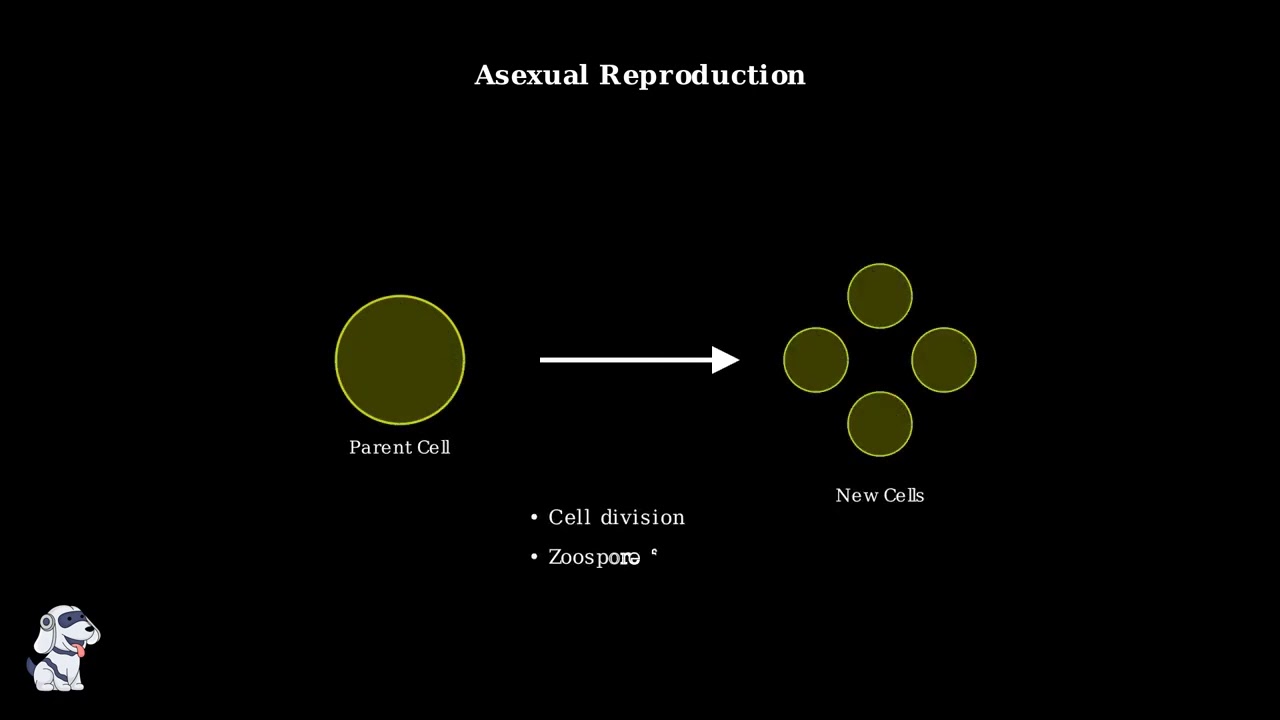



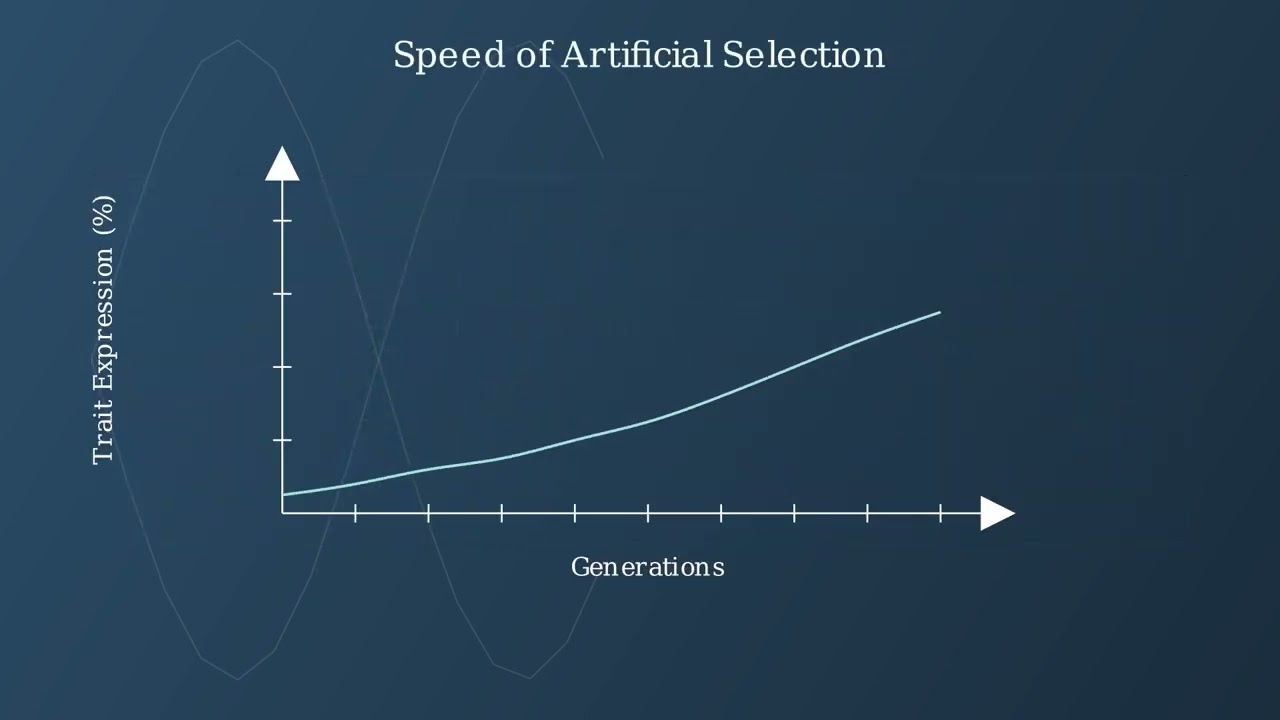


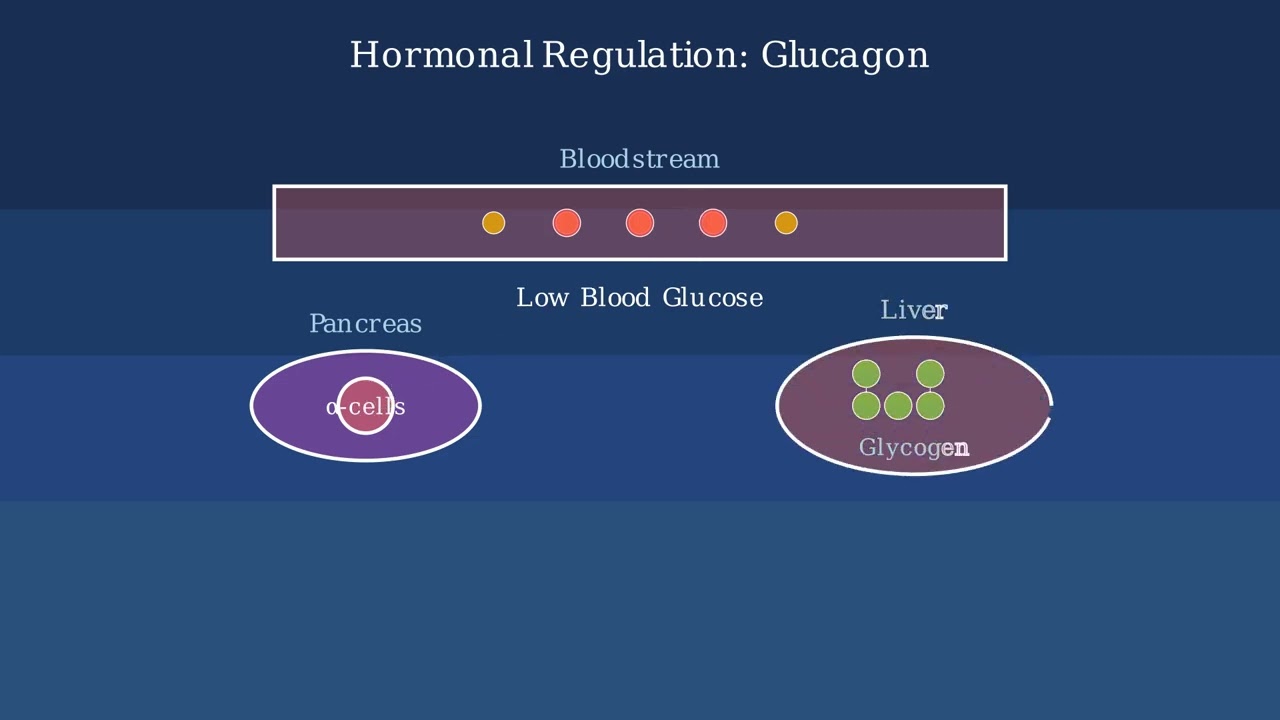
- Text Highlighting: Select any text in the post content to highlight it
- Text Annotation: Select text and add comments with annotations
- Comment Management: Edit or delete your own comments
- Highlight Management: Remove your own highlights
How to use: Simply select any text in the post content above, and you'll see annotation options. Login here or create an account to get started.